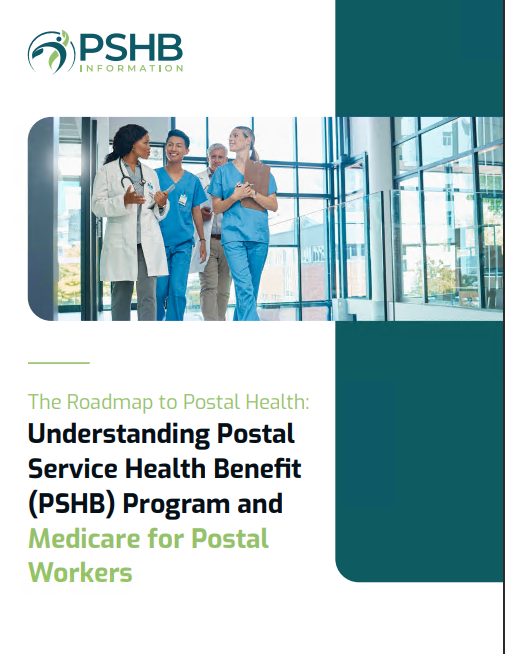Key Takeaways
-
PSHB and Medicare Advantage work differently, so understanding the key distinctions can help you make an informed decision.
-
The right choice depends on factors like cost-sharing, provider networks, and prescription drug coverage.
Understanding the Relationship Between PSHB and Medicare Advantage
If you’re a USPS retiree or soon-to-be retiree, navigating health coverage options can be overwhelming. With the transition to the Postal Service Health Benefits (PSHB) Program, you might be wondering how Medicare Advantage fits into the equation. While both options provide healthcare coverage, they differ in several ways that could impact your healthcare experience and costs. Let’s break down three key aspects that could influence your decision.
1. Cost Considerations: Premiums, Deductibles, and Co-Pays
One of the biggest factors in choosing a healthcare plan is how much it will cost you in the long run. Both PSHB plans and Medicare Advantage plans come with premiums, deductibles, and co-pays, but the way these costs are structured differs.
Premiums and Government Contributions
With PSHB, the federal government covers a portion of your premium, meaning you may pay less for your overall coverage. However, if you are Medicare-eligible, enrolling in Medicare Part B is required to maintain PSHB coverage. This means you’ll pay the standard Medicare Part B premium in addition to any applicable PSHB premiums.
Medicare Advantage plans, on the other hand, replace Original Medicare and bundle your healthcare services into one plan. These plans often include prescription drug coverage and may offer additional benefits not typically covered under traditional Medicare. However, costs vary widely depending on the plan, provider, and coverage level you select.
Deductibles and Out-of-Pocket Maximums
PSHB plans set deductibles that you must meet before cost-sharing begins. These deductibles depend on your plan selection and whether you are combining PSHB with Medicare.
Medicare Advantage plans also have annual out-of-pocket maximums, which can be a significant advantage compared to traditional Medicare. Once you reach this limit, your plan covers 100% of eligible medical costs for the rest of the year. Under PSHB, out-of-pocket caps vary by plan but are designed to offer protection from high medical expenses.
Co-Pays and Coinsurance
Both PSHB and Medicare Advantage require co-pays and coinsurance for services like doctor visits, hospital stays, and prescription medications. However, co-pays under PSHB may be different depending on whether or not you also have Medicare. If you enroll in both PSHB and Medicare, your costs may be lower due to coordination between the two plans.
2. Provider Networks: Who Can You See?
Another key factor in choosing between PSHB and Medicare Advantage is provider network access. Your ability to see your preferred doctors, hospitals, and specialists may differ depending on which option you select.
PSHB Provider Network
PSHB plans operate similarly to traditional employer-sponsored health plans, meaning you have access to a broad network of healthcare providers. However, if you enroll in Medicare, your provider network expands, allowing you to see any doctor who accepts Medicare. This flexibility is beneficial if you travel frequently or prefer a wider selection of doctors and hospitals.
Medicare Advantage Networks
Medicare Advantage plans typically operate within specific provider networks—either an HMO (Health Maintenance Organization) or PPO (Preferred Provider Organization). If you choose an HMO plan, you may need to select a primary care physician (PCP) and obtain referrals for specialists. PPO plans offer more flexibility, allowing you to see out-of-network providers, though at a higher cost.
One potential downside to Medicare Advantage is that not all providers accept Medicare Advantage plans. If you have a specific doctor or specialist you prefer, you’ll need to verify whether they are in-network under the plan you’re considering.
3. Prescription Drug Coverage: Which Option Works Best for You?
Prescription drug coverage is another critical aspect when comparing PSHB and Medicare Advantage. Both options offer coverage, but the details can vary significantly.
PSHB Prescription Coverage
PSHB plans include prescription drug coverage as part of their overall benefits. If you are enrolled in Medicare, you will automatically be enrolled in a Medicare Part D Employer Group Waiver Plan (EGWP) through your PSHB provider. This ensures you receive comprehensive drug coverage while potentially lowering your out-of-pocket medication costs.
Medicare Advantage Prescription Coverage
Most Medicare Advantage plans include built-in prescription drug coverage (referred to as MAPD plans). These plans follow the same Part D guidelines but may have different formularies, copays, and preferred pharmacy networks. The key difference is that PSHB automatically provides coverage, while Medicare Advantage plans vary by provider and location.
Key Consideration: If you take specific medications, you’ll want to compare formularies (the list of covered drugs) to ensure your prescriptions are covered at an affordable cost. PSHB plans typically offer more uniform coverage, whereas Medicare Advantage plans have more variation.
Making the Right Choice for Your Needs
Now that we’ve explored the three major aspects of PSHB and Medicare Advantage, how do you decide which option works best for you? Consider the following questions:
-
Do you prioritize lower overall costs or more predictable out-of-pocket expenses?
-
Do you need nationwide provider flexibility, or are you comfortable with a local provider network?
-
Is prescription drug coverage a significant concern based on your current medications?
If you want broad provider access and automatic drug coverage, staying with PSHB while enrolling in Medicare may be the better option. On the other hand, if you prefer an all-in-one plan with additional benefits, a Medicare Advantage plan might be a good alternative—just be sure to verify that your preferred providers and medications are covered.
Get Help from a Licensed Agent
Deciding between PSHB and Medicare Advantage is a big choice, and it’s important to weigh all the factors carefully. A licensed agent listed on this website can help you compare your options, review plan details, and ensure you’re making the best choice based on your healthcare needs.








